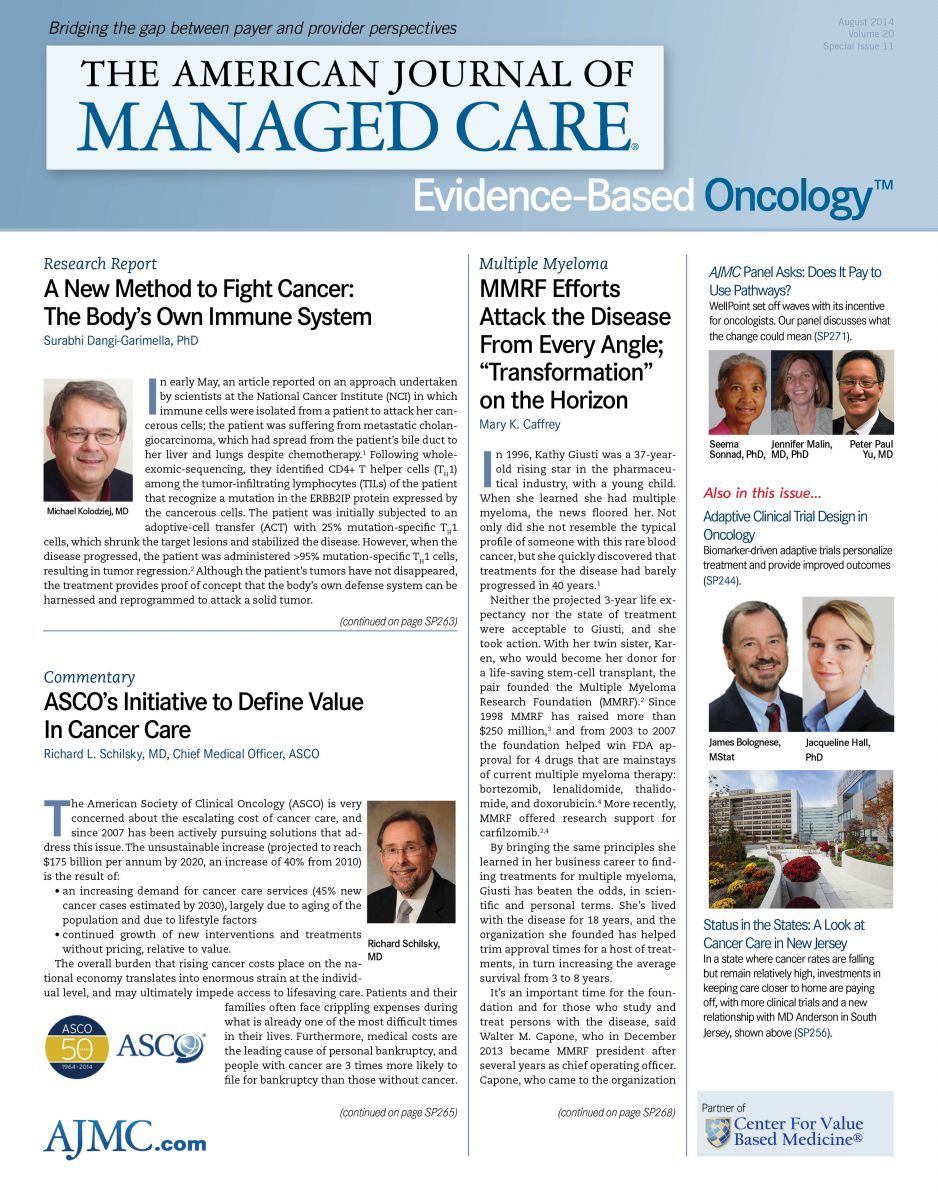- Center on Health Equity and Access
- Clinical
- Health Care Cost
- Health Care Delivery
- Insurance
- Policy
- Technology
- Value-Based Care
WellPoint Initiative May Challenge Some Practices
The insurer WellPoint made news in late May when it promised to pay $350 per month per patient to those oncologists who adhered to its cancer care clinical pathways.1 While the use of pathways is not new, this particular incentive appears to be a game changer, albeit one that not all think is a good idea.
Smaller oncology practices, which already face competitive disadvantages under healthcare reform, will struggle if they must keep track of multiple pathways for different insurers, said Ted Okon, executive director of the Community Oncology Alliance. “The idea that each payer has a different pathway is not sustainable; it’s totally unworkable,” he said. Okon told Evidence-Based Oncology he was aware of a practice that now has 5 different pathways it must track; WellPoint’s program alone includes protocols for breast, lung, and colorectal cancer.
The WellPoint program, which began July 1, 2014, in Kentucky, Indiana, Missouri, Wisconsin, Ohio, and Georgia, will expand nationwide throughout 2015.1 The initiative follows the release of studies over the past 2 years that show pathways can help reduce costs without harming the quality of care. In May 2013, Evidence-Based Oncology published a study by Cardinal Health Specialty Solutions, with Bruce A. Feinberg, DO, as the lead author, that showed an oncology pathways program could trim cancer care costs by 15% and reduce hospital admissions by 7%.2 More recently, UnitedHealth announced results from a 3-year pilot study involving 810 patients that produced a 34% reduction in cancer care costs. The study was published in the Journal of Oncology Practice.3,4
But because pathways seek to narrow treatment options beyond guidelines published by the National Comprehensive Cancer Network, the prospect of every health plan having its own protocols for reimbursement has unsettled some oncologists, especially those outside major hospital systems. Community oncologists lack the infrastructure to juggle multiple pathways protocols, Okon said, and he warned that this trend could be “another nail in the coffin” of community care. Meanwhile, other studies show that cancer drug costs, which are a prime target of savings in pathways, soar if the patient is treated in a hospital or hospital-owned clinic instead of a community practice.5
“I understand WellPoint’s drive toward trying to get a handle on costs,” Okon said. However, he said, “Pathways are not a panacea. They are a tool.” If too much judgment is taken from individual physicians, “It’s a slippery slope to a regimented formulary.”
EBO
Okon warned that with the onset of the Affordable Care Act, there are multiple pressures on community oncologists. Because many newly insured selected the lower-cost silver or bronze plans, pressure will mount to use narrow networks and formularies to control the costs of care. “We’ve only seen the tip of the iceberg,” he said. References
1. WellPoint’s new quality initiative aims to improve cancer outcomes, promote access to evidencebased and cost-effective care [press release]. Business Wire: Indianapolis, IN; May 28, 2014. http://ir.wellpoint.com/phoenix.zhtml?c=130104&p=irol-newsArticle&ID=1934999&highlight=.
2. Feinberg BA, Milligan S, Cooper J, et al. Third-party validation of observed savings from an oncology pathways program. Am J Manag Care. 2013;19(SP4): SP153-SP157.
3. Study: new cancer care payment model reduced health care costs, maintained outcomes [press release]. Minnetonka, MN: UnitedHealth Group; July 8, 2014. http://www.unitedhealthgroup.com/Newsroom/Articles/Feed/UnitedHealthcare/2014/0708CancerCarePaymentStudy.aspx.
4. Newcomer L., Gould B, Page RD, Donelan SA, Perkins M. Changing physician incentives for affordable, quality cancer care: results of an episode payment model [published online July 8, 2014]. J Oncol Pract. doi:JOP.2014.001488.
5. Rabin RC. Chemo costs in US driven higher by shift to hospital outpatient facilities. Kaiser Health News. http://capsules.kaiserhealthnews.org/?p=28074. Published May 6, 2014. Accessed August 4, 2014.


